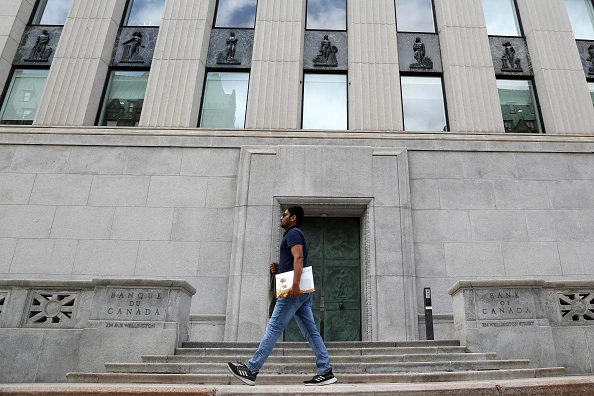
The Bank of Canada has just hiked its interest rate by another 25 points to 5% – the second quarter-point hike since June’s interest rate increase to 4.75%. The central bank has been steadily increasing interest rates over the past three years in an effort to tame inflation.

While inflation is finally levelling out – June’s inflation rate was 3.4%, the lowest since it peaked at 8.1% in June 2022 – it still remains higher than the central bank’s 2% target.
One of the reasons prices are now falling is that the economic impact of the Russian invasion of Ukraine has been fading over the past few months. Downward trends in the price of raw materials and industrial prices are also playing a role.
The Canadian economy grew at 3.1% in the first quarter of 2023, fuelled by strong growth in household spending on services. Healthy economic growth goes hand-in-hand with job creation, leading to tighter labour markets where job openings are plentiful but available workers are scarce.
The labour market has remained tight despite the unemployment rate increasing by two points to 5.4 in June. However, the unemployment rate is still below the pre-pandemic average of 5.7%.
Mortgage owners beware
For businesses and households, the latest interest rate increase means an increase in the prime rate, which is the interest rate banks charge their customers. The current prime rate is 6.95%, up from 3.70% in June 2022.
Homeowners with variable mortgage rates and terms about to expire will feel the most pain from the rate hike. At higher interest rates, borrowers need to allocate a larger share of their disposable income to debt, leaving less for spending on food and other household necessities.
While mortgage interest rates have been a significant contributor to the rise in the cost of living, grocery prices have remained high, rising by 9% year-over-year this past May.
Fortunately, price growth has slowed for some categories, such as durable goods which includes automobiles and furniture. And the price of cellular services has decreased by 8.2% over the past year.
On a more positive note, Canadian households, and the housing market, have remained resilient despite some fluctuations over the past year.
According to a recent Canada Mortgage and Housing Corporation (CMHC) report, the number of mortgages in arrears has remained low despite more households being worried about making mortgage payments on time. The relatively low number of mortgages in arrears is reflective of the financial stability and resiliency of Canadian households.
Coping with higher mortgage rates
One way Canadians have been coping with higher mortgage rates is by choosing shorter-term fixed-rate mortgages. Fixed-rate terms between one and five years have become the preferred choice, reflecting borrower expectations that the interest rates will fall within the next few years.
In fact, less than 15% of new mortgages are locked in for fixed-rate five-year terms, and less than 20% are variable rates. Prior to August 2022, fixed-rate terms of five years or longer were the preferred choice for mortgage borrowers.
Another way households are coping with higher interest rates is by increasing amortisation periods — the length of time people have to pay back a loan — to reduce monthly debt servicing costs. Extending amortisation periods can prevent homeowners from missing mortgage payments.
Over the past year, amortisation periods greater than 25 years have become increasingly common. In the fourth quarter of 2022, for example, 60% of mortgages were amortised over more than 25 years, compared to 50% three years prior.
With the interest rate hike, this trend is expected to continue as households facing higher mortgage payments look for ways to reduce their monthly expenditures. When the interest rates fall, the trend is expected to reverse.
Credit and loans
Those with secured or unsecured lines of credit will also be impacted by the rate increase since the interest rates for those products are directly related to the prime rate.
Finder, a financial comparison website, reports an average interest rate of 6.37% for a secured personal line of credit and 9.83% for an unsecured line of credit, with precise rates varying with credit scores and personal characteristics.
Credit card interest rates that average close to 19.99% are not typically affected by changes in the Bank of Canada’s overnight rate.
Those taking out a new automobile loan will also face higher interest rates. Most automobile loans are fixed rate, so those in need of refinancing or renegotiating their loans are likely to be impacted.
Smoother roads ahead?
While the downward trend in inflation suggests the Bank of Canada’s interest rate hikes may be soon coming to an end, we can expect the current interest rate to remain constant at least for the rest of the year.
The next inflation update will be announced on July 18.
At this point, it appears that the Canadian economy has picked up enough momentum this year to dodge a recession. We can expect both inflation and interest rates to soften in 2024.
This article by Laura Lamb, professor of economics, Thompson Rivers University, is republished from The Conversation.






